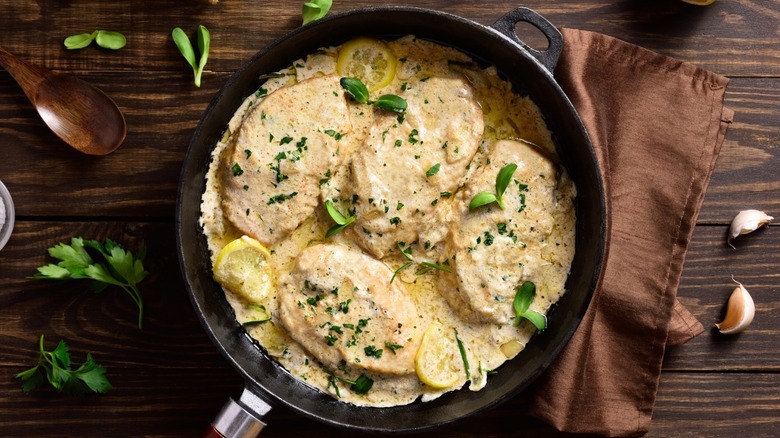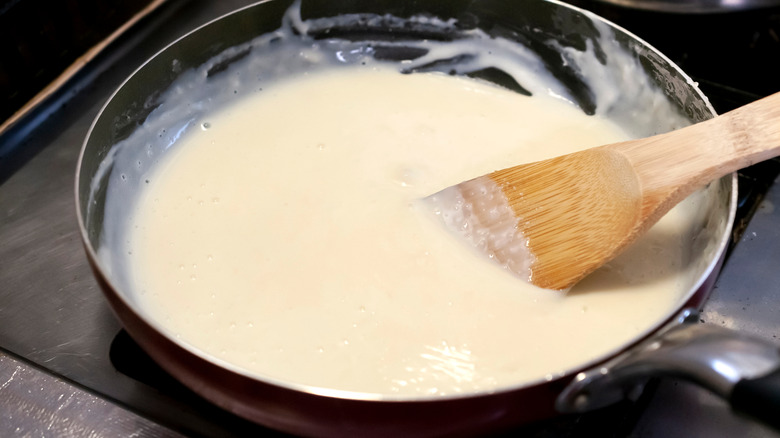The Step You Shouldn't Skip When Making A Restaurant-Worthy Pan Sauce
In the movie "Apocalypse Now," a character called Chef explains that his nickname was not some random thing: "I'm a real chef. I'm a saucier." A saucier, he goes on to say, is someone in a restaurant kitchen who specializes in making all of the different sauces. Among the most flavorful of these is the pan sauce, but creating an exquisite one is not out of reach of the home cook as long as you take some care to do it just right.
The pan sauce is something you prepare after you've cooked a piece of meat or fish. If you're lucky, there will be plenty of tasty brown bits stuck to the bottom (the fancy word for these is fond, but mastering such food-specific terminology is not a prerequisite to becoming a successful saucier). There should also be a certain amount of grease from any fat that has melted during the cooking process. While you will need some of this grease for the sauce, you'll probably need to pour some of it out of the pan before you proceed because too much of it can make your sauce too oily. Leave enough to coat the bottom of the pan, but save the rest of it in a heatproof container so you can use it for sauteeing vegetables, frying eggs, or other greasy purposes.
A pan gravy may require a bit more fat
While you don't need a lot of fat to make a simple pan sauce such as the lemon-wine one from this chicken Francese recipe, a pan gravy, too, is a type of pan sauce. If you are making a gravy or a thicker type of sauce, you may well need more fat in order to blend with some flour as a thickener. If you pour off most of the pan drippings in this case, you'll be sure to roux the day.
Yep, you guessed it, we'd been saving that pun for a special occasion, but now's the time to bust it out because you can't make a good gravy without roux. In order to create this thickening paste, you'll need equal parts of fat and flour. Cook these together for a few minutes or more, depending on how roasty and toasty you want your roux to taste. Don't make the mistake of letting the roux burn, though, since if you do, you won't be able to replace that tasty melted meat fat. This means you'll have to re-do your roux — oh noo! — with butter or oil instead. Once your roux is through cooking, add stock, wine, milk, or whatever other liquids you're using to make the pan sauce and simmer it until the liquid thickens up to a sufficiently gravy-like consistency.

